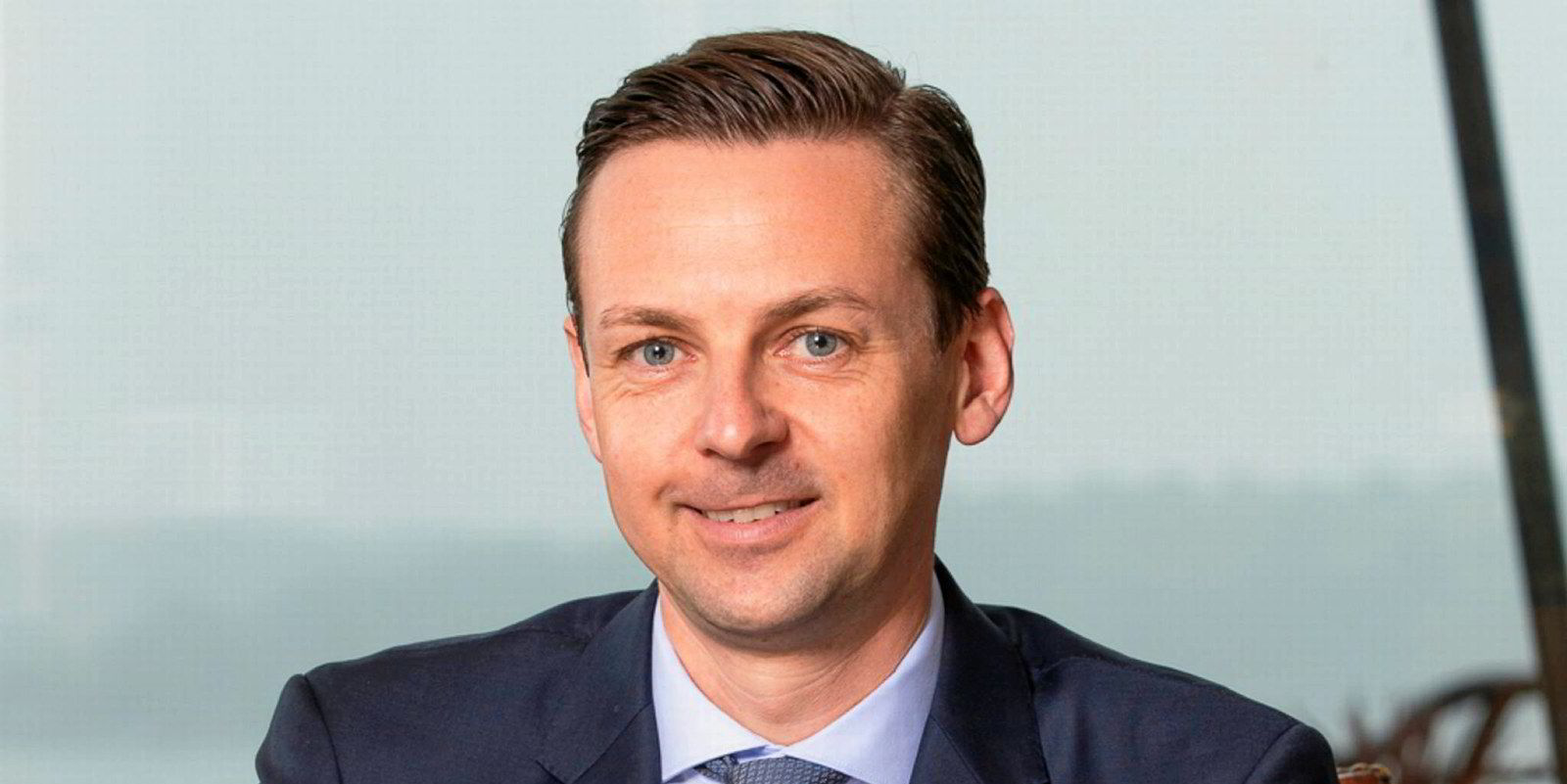The only way is up for the capesize bulker market, according to the chief executive of shipowner Golden Ocean Group.
Ulrik Andersen told TradeWinds that there are plenty of reasons to realistically expect an upturn in spot rates by the end of this year — and in any case, Golden Ocean has already hedged much of its exposure to the capesize and panamax markets for this quarter.
For the third quarter, Golden Ocean has 80% of its available capesize days booked at an average rate of $27,900 per day and has 96% of its panamax days covered at $27,100 per day.
But it has left its options more open for the final quarter.
It has forward bookings for 25% of its available capesize days at $29,500 per day on average. Its panamax fleet is booked at an average rate of $21,900 per day for 27% of available days.
As of the market close on Wednesday, the Baltic Exchange’s forward curve indicated rates of $13,551 per day for the third quarter and $15,407 per day for the final three months.
The Oslo and Nasdaq-listed owner’s second-quarter results comfortably beat analysts’ estimates, and it added an extra $0.10 to its quarterly dividend, distributing $0.60 per share.
Andersen said the result was generated through a combination of a commercial pivot and stronger scrubber economics.
“We took a meaningful amount of fixed-paying contract cover during May and June,” he said.
“And the other part of it, of course, is that we have a very modern fleet, which is fuel efficient, and that means that we make more money than a Baltic [Exchange benchmark] vessel.”
Around 60% of Golden Ocean’s 97 vessels are fitted with scrubbers, which have helped save costs. The price of very low-sulphur fuel oil surged by roughly 20% over the course of the second quarter, while the price of heavy fuel oil declined slightly.
“I think the most important thing is to look forward,” Andersen said. “When we look towards the rest of the year, it’s clear that there are headwinds, and that the macro backdrop right now is uncertain.
“And therefore we are also happy with being able to say that we have fixed 56% of our available vessel days for the remainder of this year. We feel we have a good hedge against the low markets and we have protected our capacity to pay dividends in the coming quarter because of these fixed-paying contracts.”
Weak sentiment is weighing heavily on bulker markets in the absence of much positive economic news.
Average capesize spot rates fell below $4,000 per day on Thursday, the lowest level in two years. Panamax spot rates have fallen below $13,000 per day on average, a level not seen since early January 2020.
Andersen thinks that, at this point, the only way things can go is up.
“We have a very weak market environment at the moment, but we do believe that there’s got to be a rebound before the turn of the year, driven by increasing iron ore output from Vale, continued inefficient allocation of coal and restocking in China,” he said.
Andersen pointed to the fact that China, the world’s largest importer of dry commodities, has eased its Covid-19 restrictions, increased its economic policy stimulus measures and has cut lending rates. It will, of course, take time for the positive effects to translate into demand for bulk carriers, but the green shoots are there.
But it is evident that markets will not reach the high levels seen in 2021, he added.
“I think it’s fair to say that there’s more upside than downside from here,” he said.
“Congestion has unwound and it’s probably the single largest contributor pushing the markets down where they are today.
“But there are some other factors now coming into play as we get into the fall. And I think those factors will be enough to pull the cape[size] market out of today’s levels and into a territory where we start generating profits.”
Golden Ocean recorded $163.7m in net profit for the second quarter, equivalent to earnings per share of $0.82.
This is up from $104.5m during the same period last year, when earnings per share were $0.52.
Operating revenue was up 15% year on year and totalled $316.7m during the three months.
Golden Ocean’s operated fleet of 97 vessels earned an average time charter equivalent rate of $29,431 per day during the period, up from $24,920 per day in the same quarter last year.
Andersen also expects the coal trade to continue to be one of the big demand drivers for bulkers this year as the fuel makes its way from far-flung exporters to markets such as Europe, which this month implemented its final ban on Russian coal.
“We expect to see even more tonne-miles coming from coal,” he said.
Meanwhile, Golden Ocean is actively looking at how its vessels can engage in trade with Ukraine.
“There’s a lot of things that need to be aligned when it comes to [Ukraine], of course — from insurance to the safety of the crew, the vessel, to having a stem that fits with one of your vessels, etc. But we are open to the idea and are looking at it,” he said.
Golden Ocean has been clear for some time now that it wants to focus on larger newcastlemax, capesize and panamax vessels and step away from the last remaining ultramaxes in its fleet.
The shipowner confirmed in June it has sold its two owned ultramax bulkers — the 60,300-dwt Golden Cecilie and Golden Cathrine (both built 2015) — for $63m to an undisclosed buyer. The sale is expected to generate a $22m gain when the vessels are delivered by the end of 2022.
That leaves Golden Ocean with just one ultramax, which is on a long-term time charter with purchase options attached. Andersen said the company is still thinking about what to do with the vessel — its options for purchasing it or extending its charter are both “in the money”.
“What we will be considering, of course, is how do we get the best value out of it — is that by exercising [purchase options] and flipping the vessel, or extending the TC [time charter] period?” Andersen said.
“These are the considerations that we will have going forward, but it is not our ambition to be in the ultramax segment. We don’t see ultramaxes as a place we want to be active in the long run.”




